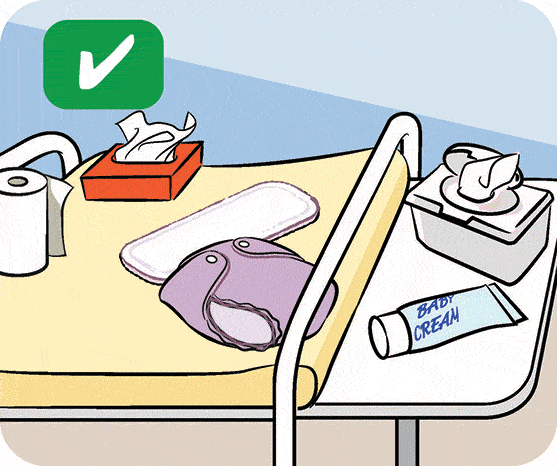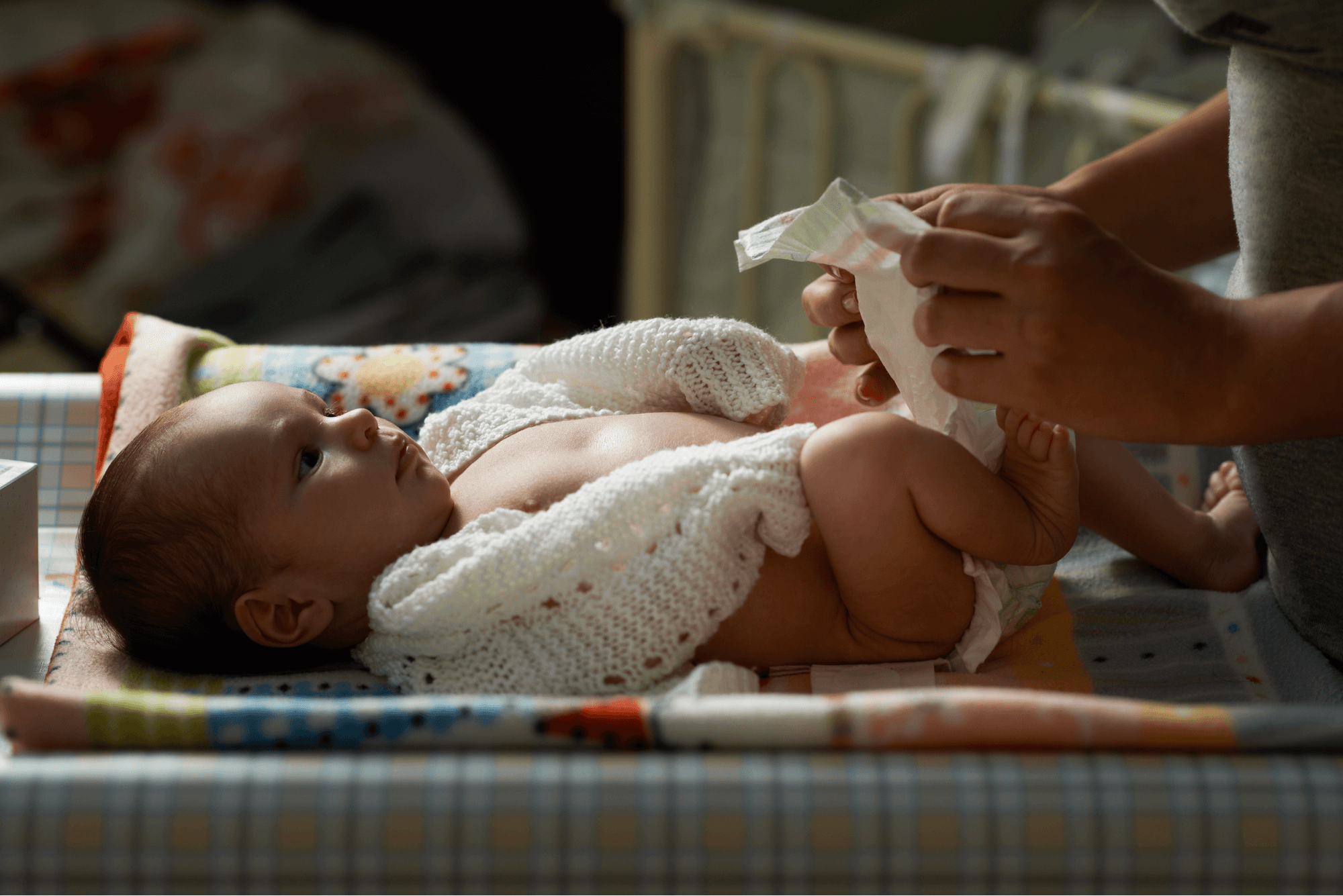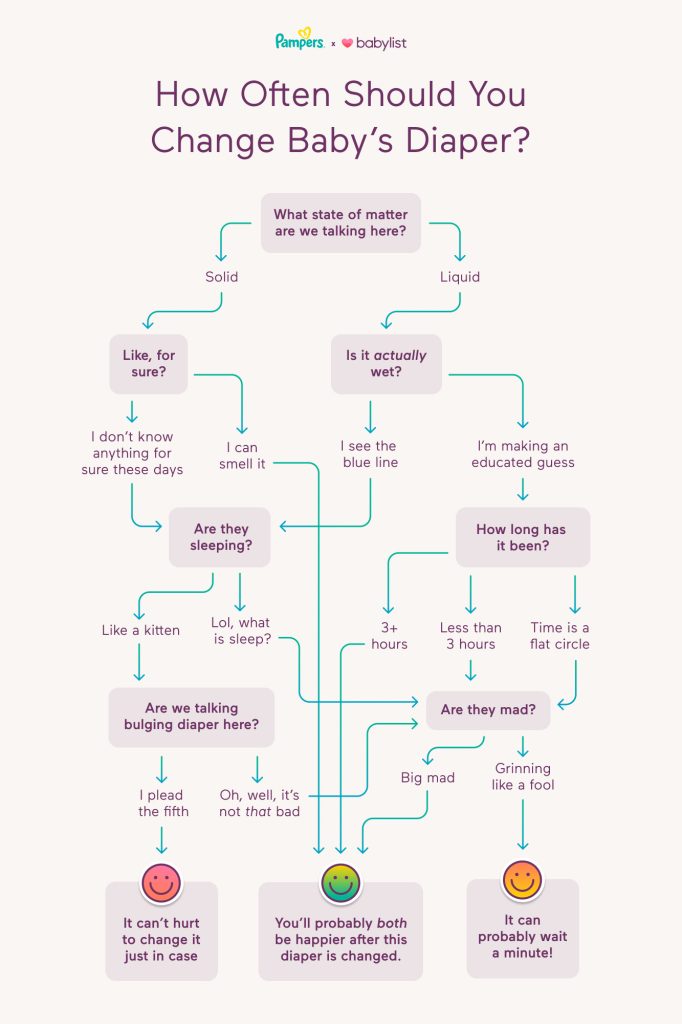Newborns need their nappies changed every 2 to 3 hours. Older babies require changing every 3 to 4 hours.
Caring for a baby involves frequent nappy changes to ensure hygiene and comfort. Newborns often need their nappies changed every 2 to 3 hours because they urinate frequently and have more bowel movements. As babies grow older, the frequency reduces slightly to every 3 to 4 hours.
Regular nappy changes help prevent diaper rash and keep the baby comfortable. Parents should always check the nappy regularly and change it as soon as it becomes soiled. Maintaining a clean and dry nappy area is crucial for the baby’s health and well-being. Proper nappy changing routines contribute significantly to a happy and healthy baby.

Credit: www.pampers.co.uk
Newborn Nappy Needs
Understanding your newborn’s nappy needs is crucial for their comfort and health. In this section, we will discuss how often you should change a newborn’s nappy.
First Few Days
In the first few days of a newborn’s life, nappy changes are frequent. Newborns pass meconium, a sticky, greenish-black stool. Expect 6 to 8 nappy changes a day during this period. Meconium can be tough to clean, so be prepared.
Frequency In Weeks
As the baby grows, the frequency of nappy changes evolves. Here’s a brief guide:
| Age | Number of Nappy Changes per Day |
|---|---|
| 1-2 Weeks | 8-10 |
| 3-4 Weeks | 6-8 |
| 1-3 Months | 6-8 |
During the first 1-2 weeks, expect to change nappies about 8-10 times a day. From 3-4 weeks, this may reduce to 6-8 times a day.
After the first month, the frequency usually stabilizes around 6-8 nappies per day. Always check for wetness and soiled nappies to maintain your baby’s hygiene.
Signs A Nappy Needs Changing
New parents often wonder: how do you know when a baby’s nappy needs changing? Recognizing the signs can help keep your baby comfortable and prevent diaper rash. Here are some key indicators that your baby’s nappy needs attention:
Wetness Indicators
Modern nappies come with built-in wetness indicators. These are usually colored lines on the outside of the nappy. When the nappy is wet, the line changes color. This is a clear sign that it’s time for a change.
Another way to check for wetness is by feeling the nappy. If it feels heavy or soggy, it likely needs to be changed. Always make sure to change a wet nappy promptly to avoid skin irritation.
Behavioral Cues
Babies often show signs of discomfort when their nappy is dirty. They may become fussy or cry more than usual. Pay attention to these behavioral cues.
Sometimes, babies will pull at their nappy or try to remove it. This is another sign that a change is needed. Older babies might even point to their nappy or say words indicating discomfort.
It’s essential to keep an eye on your baby’s behavior. Quick action can prevent diaper rash and keep your baby happy.
Day Vs. Night Changes
Babies need frequent nappy changes to stay comfortable and avoid rashes. Daytime and nighttime nappy changes have different patterns and strategies. Understanding these can help parents better care for their little ones.
Daytime Patterns
During the day, babies are more active and eat more often. This means they usually need their nappies changed every 2 to 3 hours. Newborns may need even more frequent changes.
Keep an eye on signs like fussiness or a bulging nappy. These indicate it’s time for a change. Wet nappies should be changed immediately to prevent diaper rash.
Below is a simple table showing daytime nappy change patterns:
| Age | Frequency |
|---|---|
| Newborn | Every 1-2 hours |
| 0-6 months | Every 2-3 hours |
| 6-12 months | Every 3-4 hours |
Nighttime Strategies
Nighttime nappy changes are less frequent to ensure babies sleep well. Use high-absorbency nappies to keep your baby dry longer. Change nappies right before bedtime to start the night fresh.
If the baby wakes up, check the nappy but avoid waking them just to change it. Try using a barrier cream to protect the skin through the night.
Here are some tips for nighttime nappy changes:
- Choose high-absorbency or overnight nappies.
- Apply barrier cream to prevent rashes.
- Change the nappy right before bedtime.
Impact Of Feeding On Nappy Changes
The way a baby is fed significantly impacts nappy changes. Both breastfed and formula-fed babies have different nappy change needs. Understanding these differences can help parents manage nappy changes better.
Breastfeeding
Breastfed babies often have more frequent nappy changes. Breast milk is easier to digest, leading to more bowel movements. Breastfed babies may need a nappy change after every feeding.
Here is a summary of nappy changes for breastfed babies:
- More frequent bowel movements
- Watery and looser stools
- Nappies may need changing 8-12 times a day
Formula Feeding
Formula-fed babies usually have fewer nappy changes compared to breastfed babies. Formula milk takes longer to digest. This results in fewer bowel movements.
Here is a summary of nappy changes for formula-fed babies:
- Less frequent bowel movements
- Thicker and firmer stools
- Nappies may need changing 6-8 times a day
Nappy Rash Prevention
One key concern for parents is preventing nappy rash. Nappy rash can cause discomfort for your baby. Understanding its causes and taking preventive measures can help.
Causes Of Nappy Rash
Nappy rash usually occurs due to prolonged exposure to moisture. Dirty nappies can irritate your baby’s sensitive skin. Other causes include:
- Friction from the nappy
- Sensitive skin
- Infrequent nappy changes
- Allergic reactions to nappy materials or wipes
- Yeast or bacterial infections
Preventative Measures
Preventing nappy rash involves keeping your baby’s skin dry and clean. Here are some effective measures:
- Frequent Nappy Changes: Change the nappy every 2-3 hours or when soiled.
- Gentle Cleaning: Use water or alcohol-free wipes to clean the area.
- Dry the Skin: Pat the skin dry with a soft towel before putting on a new nappy.
- Barrier Creams: Apply a thin layer of barrier cream to protect the skin.
- Air Time: Let your baby spend some time without a nappy each day.
Quick Tips Table
| Tip | Details |
|---|---|
| Change Nappies Often | Every 2-3 hours or when dirty |
| Use Barrier Cream | Apply after each change |
| Avoid Tight Nappies | Ensure a comfortable fit |
| Allow Air Time | 15 minutes daily without a nappy |

Credit: raisingchildren.net.au
Choosing The Right Nappy
Choosing the right nappy for your baby is crucial. It ensures comfort and hygiene. There are different types and sizes to consider.
Disposable Vs. Cloth
Parents often debate between disposable and cloth nappies. Both have their pros and cons.
- Disposable Nappies: These are convenient and easy to use. They are great for travel and busy days. They can be more expensive in the long run.
- Cloth Nappies: These are reusable and eco-friendly. They can save money over time. They require washing and drying.
Both types can keep your baby dry and comfortable. The choice depends on your lifestyle and budget.
Size And Fit
Choosing the right size and fit is essential for your baby’s comfort. Ill-fitting nappies can cause leaks and discomfort.
| Baby Weight | Nappy Size |
|---|---|
| Up to 5 kg | Newborn |
| 5-8 kg | Small |
| 8-12 kg | Medium |
| 12-16 kg | Large |
| 16+ kg | Extra Large |
Check the nappy’s fit around your baby’s waist and legs. Adjust if it’s too tight or too loose.
Always choose a nappy based on your baby’s current weight. Sizes can vary between brands. Read labels carefully.
Expert Tips For Easier Changes
Changing your baby’s nappy can be a challenging task. With some expert tips, this can become an easier and quicker process. Here are some valuable insights to make nappy changes smoother.
Efficient Changing Techniques
Use these techniques for a more efficient nappy change:
- Prepare in advance: Have everything ready before you start.
- Quick clean-up: Use wipes to clean your baby swiftly.
- Distraction: Give your baby a toy to keep them occupied.
Essential Supplies
Having the right supplies can make nappy changes easier. Below is a list of essential items:
| Item | Purpose |
|---|---|
| Nappies | To keep your baby dry and comfortable |
| Baby wipes | For quick and gentle cleaning |
| Changing mat | Provides a clean surface for changing |
| Nappy cream | To prevent and treat rashes |
| Hand sanitizer | For keeping your hands germ-free |
When To Seek Medical Advice
Knowing when to seek medical advice about your baby’s nappy changes is crucial. While most nappy changes are routine, certain signs need immediate attention. Here are some guidelines to help you identify when to consult a healthcare professional.
Unusual Symptoms
Watch for unusual symptoms that may indicate an issue. These include:
- Persistent diarrhea lasting more than 24 hours
- Blood or mucus in the stool
- Severe diaper rash that does not improve
- Frequent vomiting along with nappy changes
If you notice any of these symptoms, contact your doctor immediately. Early intervention can prevent more serious conditions.
Persistent Issues
Some issues may persist despite regular care. These can be signs of underlying problems:
| Issue | Possible Concern |
|---|---|
| Consistently wet nappies | Possible urinary tract infection |
| Hard, dry stools | Possible constipation |
| Unusual odor in urine | Possible dehydration |
| Foul-smelling stools | Possible digestive issues |
For persistent issues, it is important to seek medical advice. A healthcare provider can diagnose and treat these conditions effectively.

Credit: completelybaby.com
Frequently Asked Questions
How Often Should Newborn Nappies Be Changed?
Newborn nappies should be changed every 2-3 hours. Frequent changes help prevent diaper rash and keep your baby comfortable.
Do Wet Nappies Need Changing Immediately?
Yes, wet nappies should be changed immediately. Prolonged wetness can cause skin irritation and discomfort for the baby.
How Many Nappies Does A Baby Use Daily?
A baby typically uses 6-10 nappies daily. Newborns may require more frequent changes than older babies.
Can A Dirty Nappy Cause Diaper Rash?
Yes, a dirty nappy can cause diaper rash. Changing nappies promptly and keeping the area clean helps prevent rashes.
Conclusion
Changing your baby’s nappy frequently is crucial for their comfort and health. Regular checks help avoid rashes and infections. Always monitor for signs indicating a change is needed. By staying attentive, you ensure your baby stays happy and comfortable. Prioritize their needs to keep them smiling and content.




